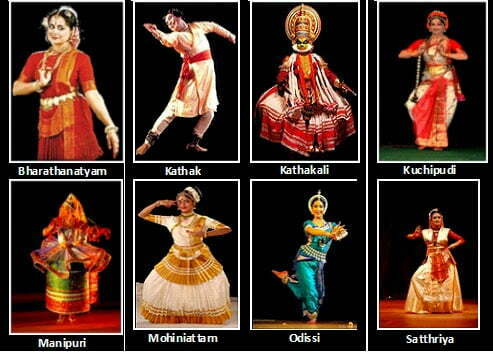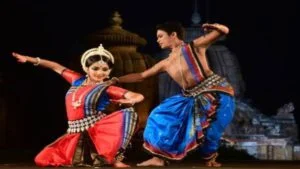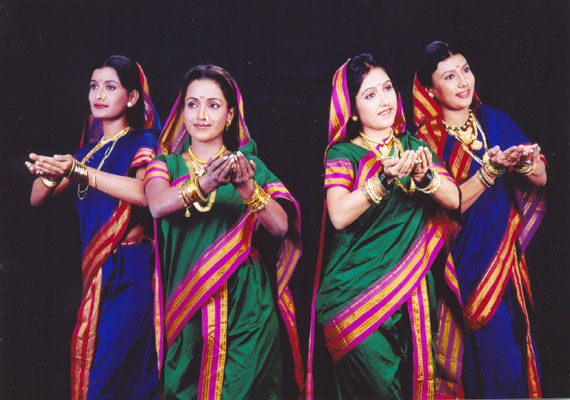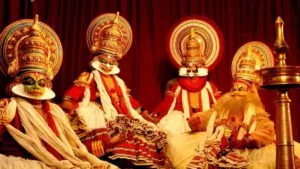Kathakali Dance is one of the popular classical dance forms in India. It is basically the dance form of south-western India, that is from Kerala. It is one of the most vibrant dance forms as the dancer wears colourful and vibrant costumes, masks and so on while performing this dance form. Kathakali is mainly the depiction of a story by the dancer through his performance. It is mainly believed to have been derived from the temples and folk arts of south India.
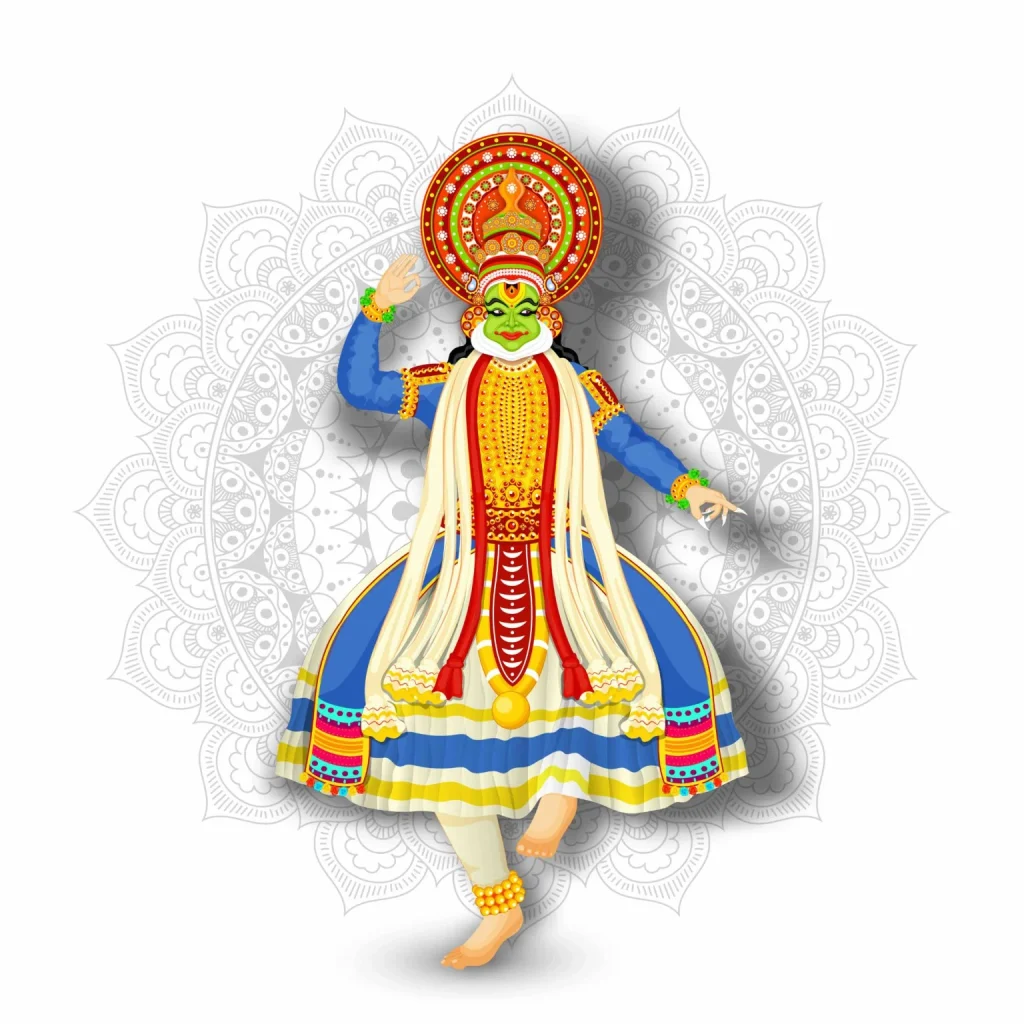
- Which state dance is Kathakali?
- History
- What is the literal meaning of Kathakali?
- Who is considered as the father of Kathakali?
- What are the five main roles in Kathakali?
- Importance of Kathakali
- Purpose of Kathakali Dance
- How do you read Kathakali?
- What is Kathi in Kathakali?
- Kathakali Costumes
- Who are the famous Kathakali dancers?
- Summary
- Which state dance is Kathakali?
- History
- What is the literal meaning of Kathakali?
- Who is considered as the father of Kathakali?
- What are the five main roles in Kathakali?
- Importance of Kathakali
- Purpose of Kathakali Dance
- How do you read Kathakali?
- What is Kathi in Kathakali?
- Kathakali Costumes
- Who are the famous Kathakali dancers?
- Summary
Which state dance is Kathakali?
Kathakali is the dance form of Kerala in South India. It is believed to have had its origin in the 17th century BC. This dance form was believed to have its origin from Krishnanattam which had its origin in at least the first millennium CE.
History
The dance form has its origin in Natya Sashtras and evolved around the 17th century. Natya Shastras is one of the oldest Sanskrit texts written by Bharata Muni. The compilation of the Natya Shastras is dated back to 200BCE to 200CE. Although the emergence of Kathakali is not clear yet it is believed to have been performed in coastal Kerala in between 16th and 17th century.
What is the literal meaning of Kathakali?
The literal meaning of the word Kathakali includes ‘Katha’ which means a traditional tale and ‘Kali’ means art.
Who is considered as the father of Kathakali?
Kottarakkara Thampuran is considered to be the founder and the father of the dance form. He was also considered to be one of the best performers of this dance form. He was the pioneer of writing down the first dance drama for this dance form. It divided this dance form into eight divisions which depicted the Ramayana. This depiction of the Ramayana through Kathakali was named as Ramanattam.
What are the five main roles in Kathakali?
This popular dance form can be divided into five main roles which is also known as the Veshams of Kathakali. These five roles are as follows:
- PACHA (GREEN) – This is used to depict the characters of kinds or divine beings. Mainly used to denote noble roles in the dance form Kathakali.
- KATHI (KNIFE) – This is used to depict characters which are evil and has the characteristics of rudeness, arrogance and so on.
- KARI (BLACK) – This is also used to depict the evil characters.
- THAADI (BEARD) – Includes the Vella Thaadi also represents the white beard and is used to depict characters which are not evil. Used to depict characters of Ram from Ramayana. On the other hand, the Chuvanna Thadi is used to depict characters which are evil in Hindu mythologies.
- MINUKKU (RADIANT) – This is used to depict characters which are spiritual.
Importance of Kathakali
Kathakali is a beautiful dance form which represents the art and culture of Kerala. This dance form uses exquisite expressions, hand and feet movements and also consists of a unique costume which is much different from other Indian Classical dance forms. The mask also forms a major attraction of this dance. It not only involves dance but the name itself denotes that it also gives vivid importance to acting as the dance is done to explain a mythological story altogether.
It also has other significances which this dance provides to the physic of the dancer. Also, a mode of relaxation and increases the power of expression in a dancer altogether. Any performer who expresses this dance gives a strong message through the beautiful message and costume of oneself which appeals the audience to watch the dance.
Purpose of Kathakali Dance
Kathakali is the manifestation of humanity in Hinduism and helps to express dance through the form of storytelling. It provides an opportunity to look back to the past which evolved in the 17th century. It is not only a dance-drama but the concept of devotion is also involved in this form of dance. The main purpose of the dance is to portray a story in the form of a dance-drama which looks vibrant and expressive with the colourful costume.
How do you read Kathakali?
It is read through the makeup in the dance and also through the expression of the dancer. The dance includes two main characters of good and evil which are differentiation through their masks and face paintings.
What is Kathi in Kathakali?
This is make-up in Kathakali and is used to represent a knife. This denotes the prominent and important characters in the mythological texts like the Duryodhana, Keechaka, Ravana and so on. The Kathi in Kathakali can be divided into two main forms which are the Nedumkathi and the Kurumkathi.
Kathakali Costumes
This dance form has a variety of costumes which are worn in accordance with the role he or she is about to perform. This includes the headgears which are worn by men, the makeup and masks which are also different from each other. Men generally wear full-sleeved jackets which are dark in colour. Bulged-out skirts are also worn by the Kathakali dancers.
The lower part of the dancer’s dress that is the skirt is the same for all except the Minukku dancer. Female dancers of Kathakali wear sarees white in colour, make their hair into a top knot near the forehead, ornamented scarf, and red jackets. Ornaments include the bracelets, necklaces, bangles, ankle bells and so on.
The costume is a very important part of this dance form and can help in differentiating between different characters. The costume is vibrant and is much different from other dance forms.
Who are the famous Kathakali dancers?
The famous dancers of Kathakali include Kalamandalam Gopi, Kalamandalam Krishna Prasad, Kottakal Sivaraman, Kalamandalam Ramankutty Nair, Kalamandalam Vasu Pisharody, Kavungal Chathunni Panicker.
Summary
This is the dance form of great culture and heritage whereby an eternal fight amongst the good and the evil is represented. The vibrant, gorgeous and beautiful dance form is an attraction for the ones who watch this dance form. The proper coordination between the hand, leg and eye gestures is one of the main components of this dance form. The dancers are both benefitted with the physical and mental well being as they learn this dance form.
Share with your friends
